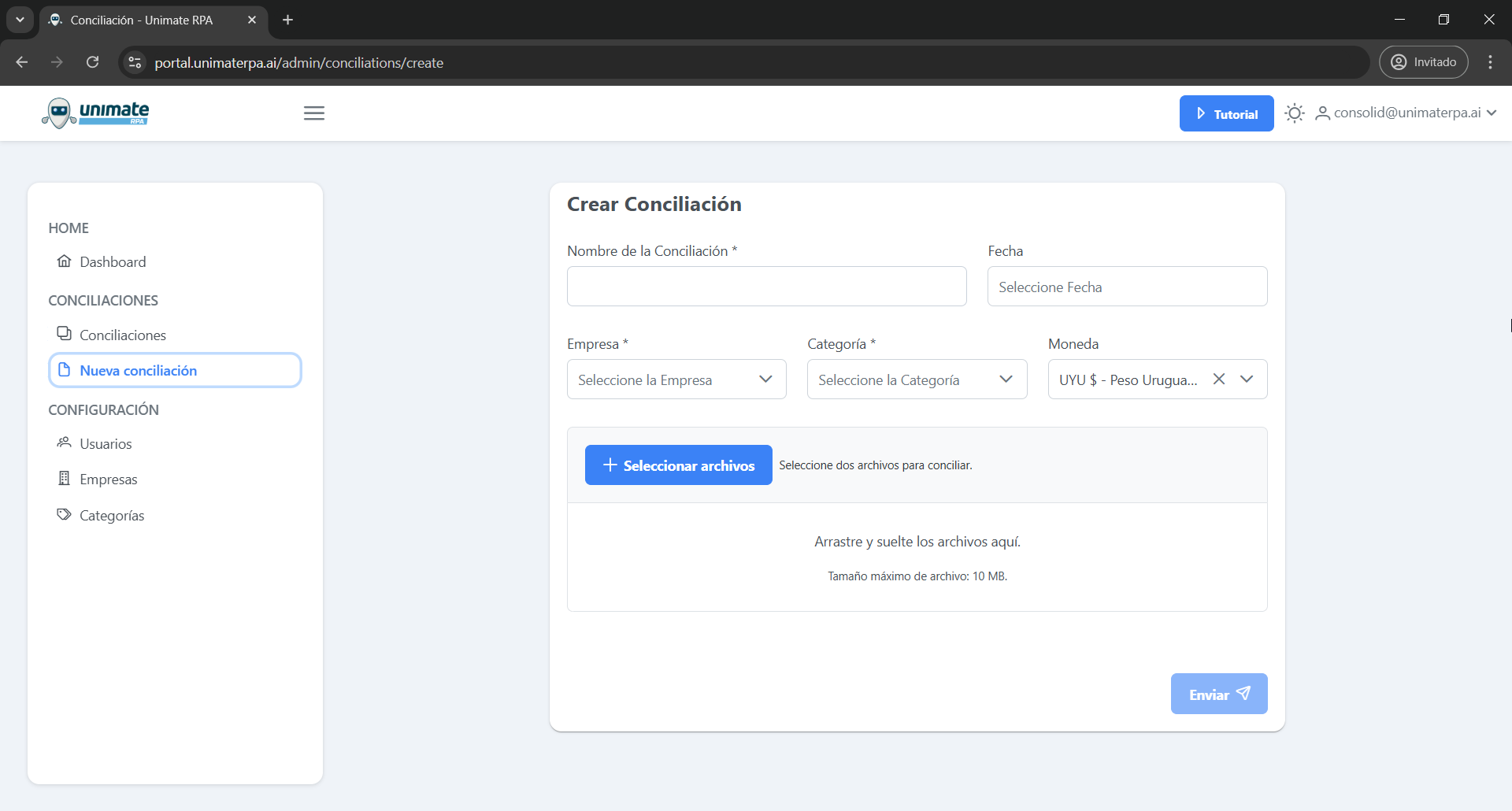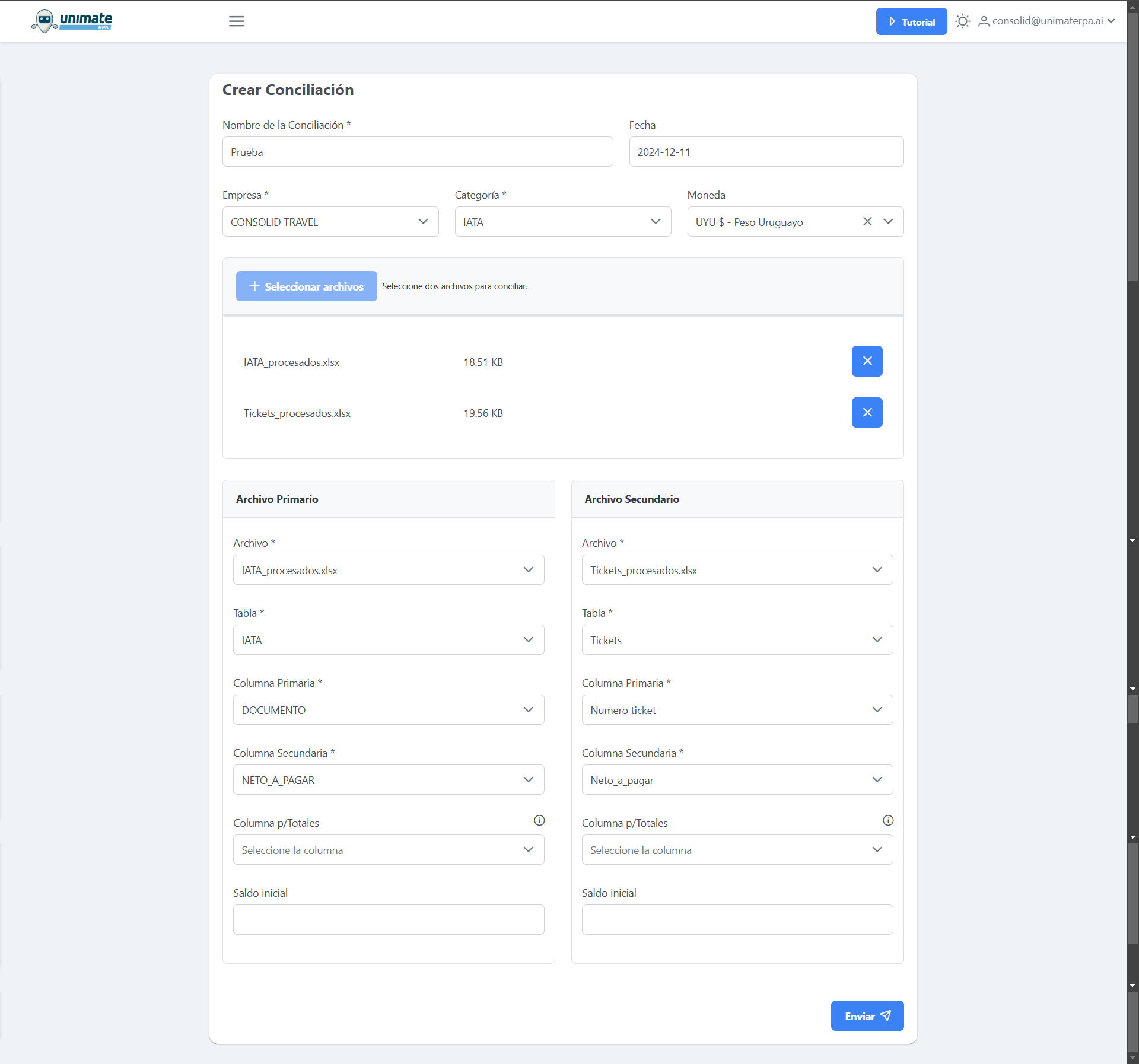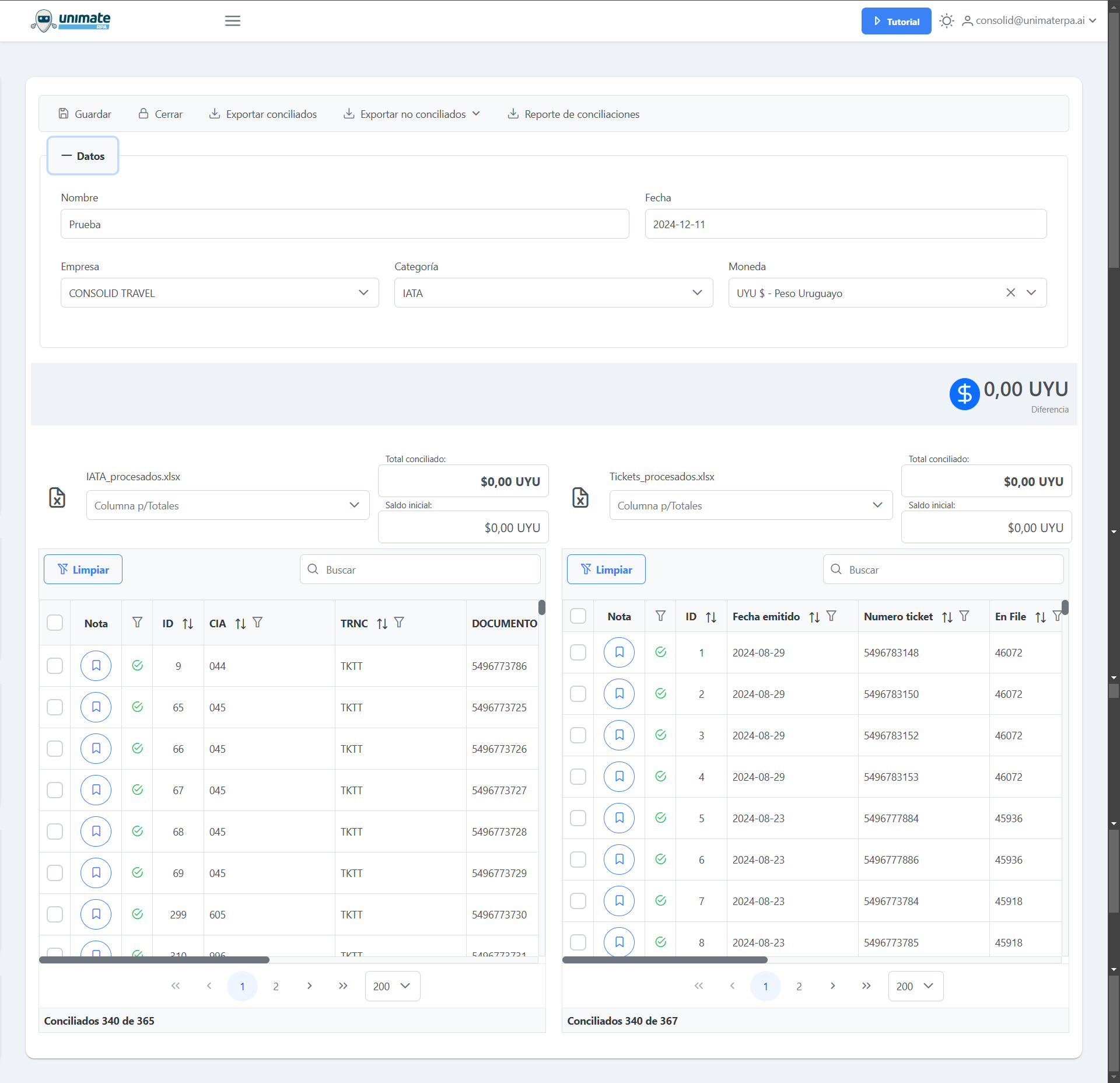Creation of Reconciliations¶
Creating reconciliations is the first step in analyzing and comparing data in the platform. The detailed process is described below:
Navigate to the “New Conciliación” section: In the main menu, select the “New Conciliación” option to start the process.

Fill in the required fields: Provide the necessary information to configure the conciliación:
Name: A unique identifier for the conciliación. Use it to clearly describe the purpose or content of the conciliación (e.g., “Sales vs. Bank Movements - January 2024”).
Date: Indicates the reference date of the conciliación. This date helps to identify in which period the data comparison was performed.
Company: Select the company associated with conciliación. The available options depend on the companies previously configured and to which the user has access.
Category: Classify conciliación under a specific category (such as “Bank ITAU”, “Country Argentina”, “Sales”, “Purchases” or “Payments”). This facilitates organization and further analysis.
Currency: Specify the currency to be used for conciliación. By default, the currency configured at user level is used, but you can adjust it if necessary.
Select primary and secondary files: Upload the documents containing the data to conciliar. The platform allows you to assign key columns for analysis. It is important that the files meet the following requirements:
Required format: Files must be Excel files and be structured as tables with clearly defined headings.
Primary file: The main document that contains the base records. For example, a sales report.
Secondary file: The document against which the primary file will be compared. For example, a bank statement.
Key columns: Identify the main columns (such as amounts, dates or unique identifiers) that will be used to perform the conciliación.

Start the process at conciliación:
Una vez completados los pasos anteriores, hacé clic en el botón «Enviar» para que el sistema procese los datos y genere los resultados.
para que el sistema procese los datos y genere los resultados.

Additional details¶
Flexibility in configuration: The platform allows you to adjust fields and select multiple categories, companies or currencies according to specific needs.
Format compatibility: Files can be in common formats such as Excel or CSV.
Real-time validation: Before sending the data, the system verifies that all required fields are complete and the key columns are correctly assigned.